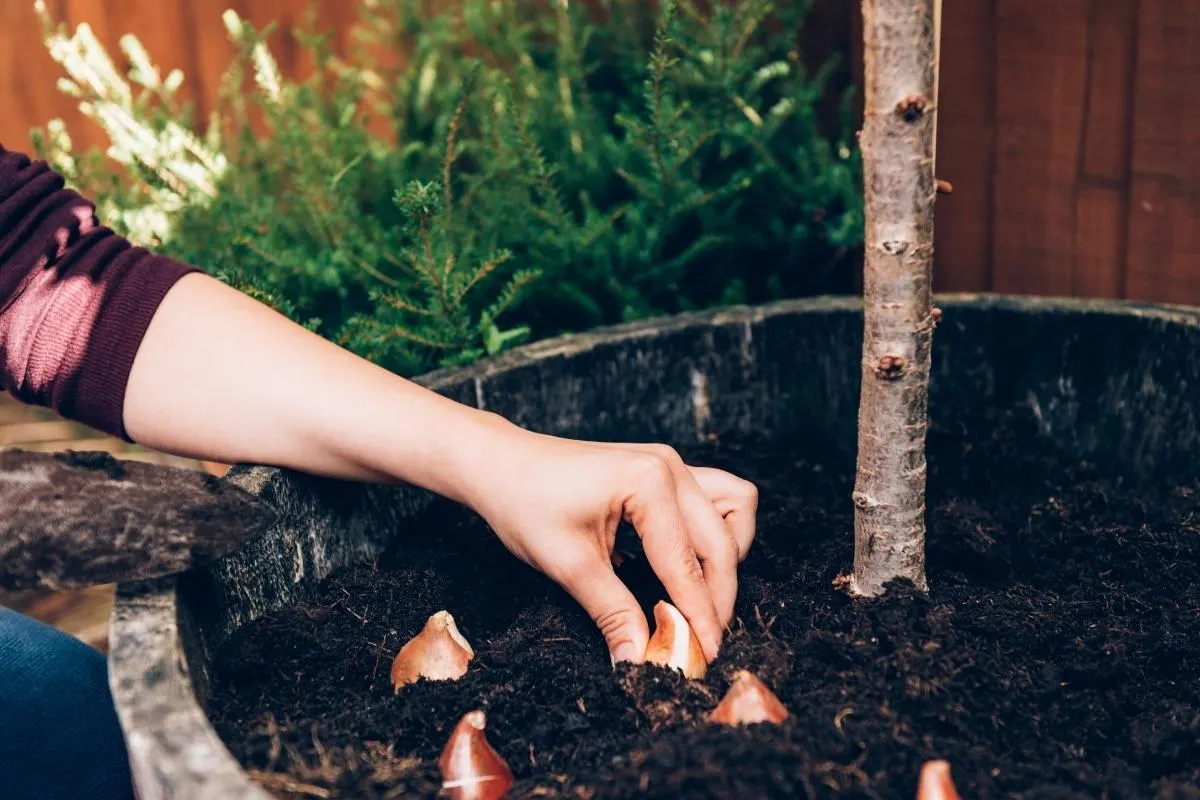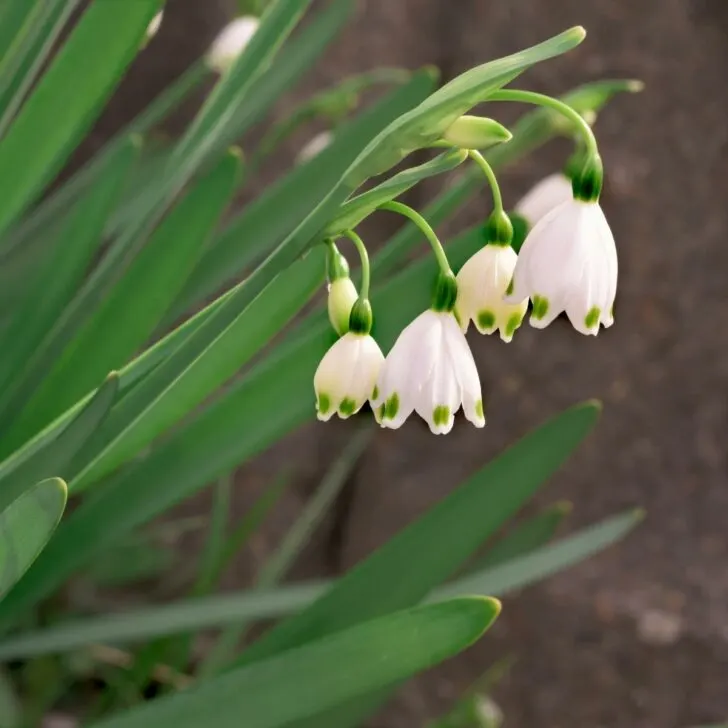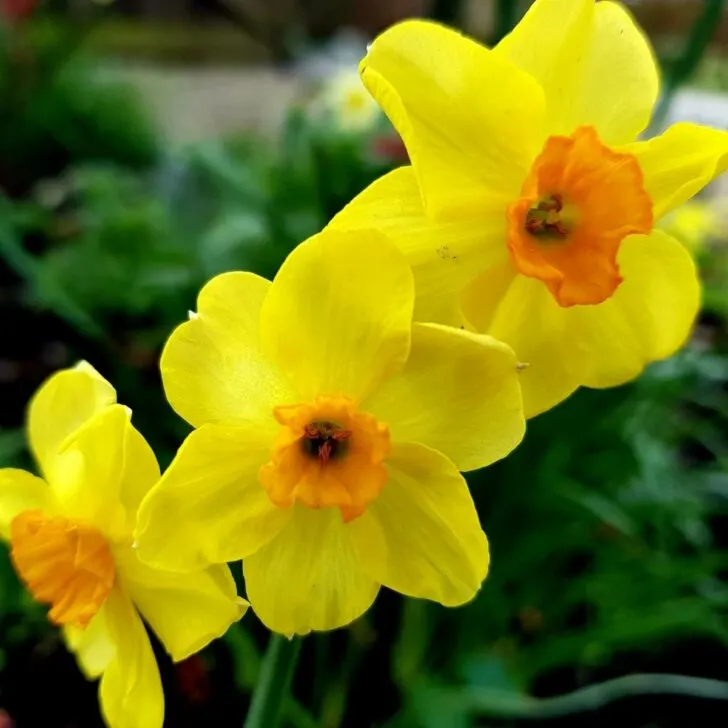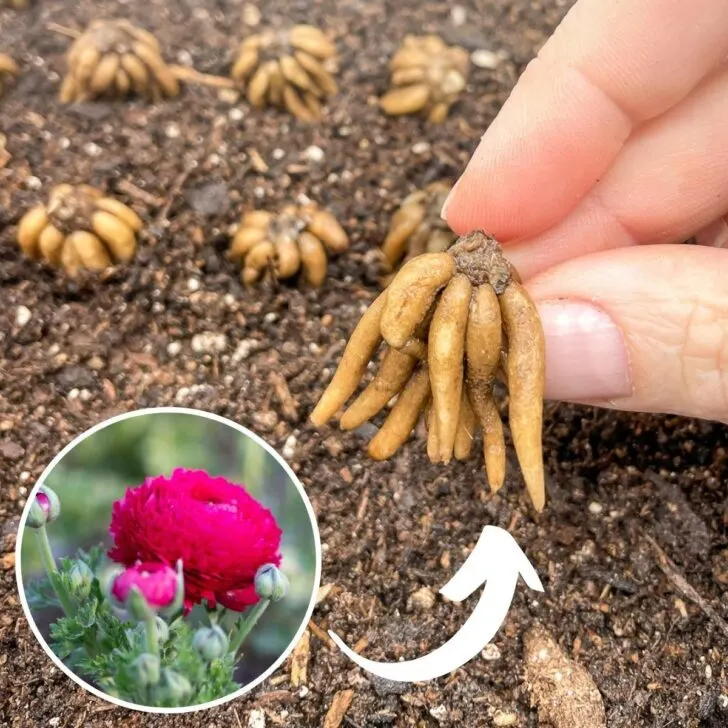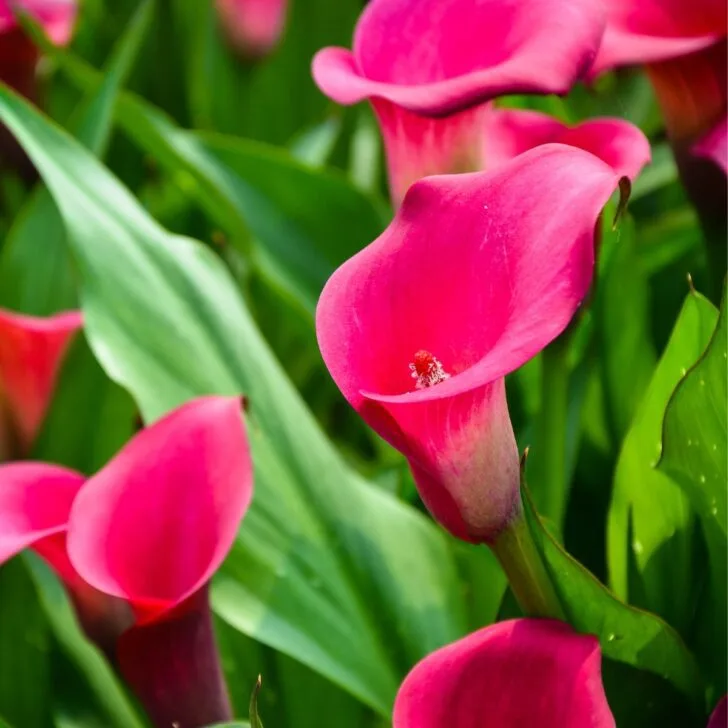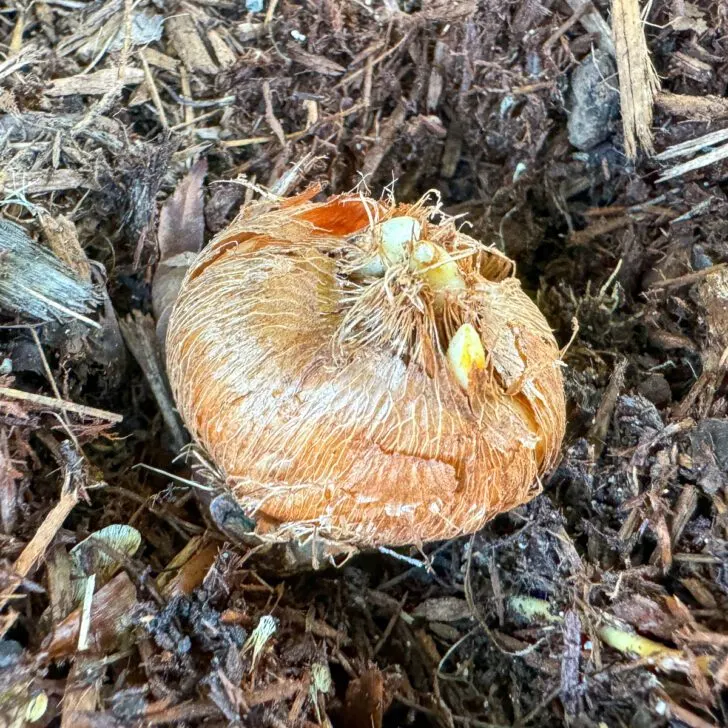Learn how to plant tulip bulbs, including the proper depth, spacing and light levels, so you can enjoy a beautiful display in the spring!
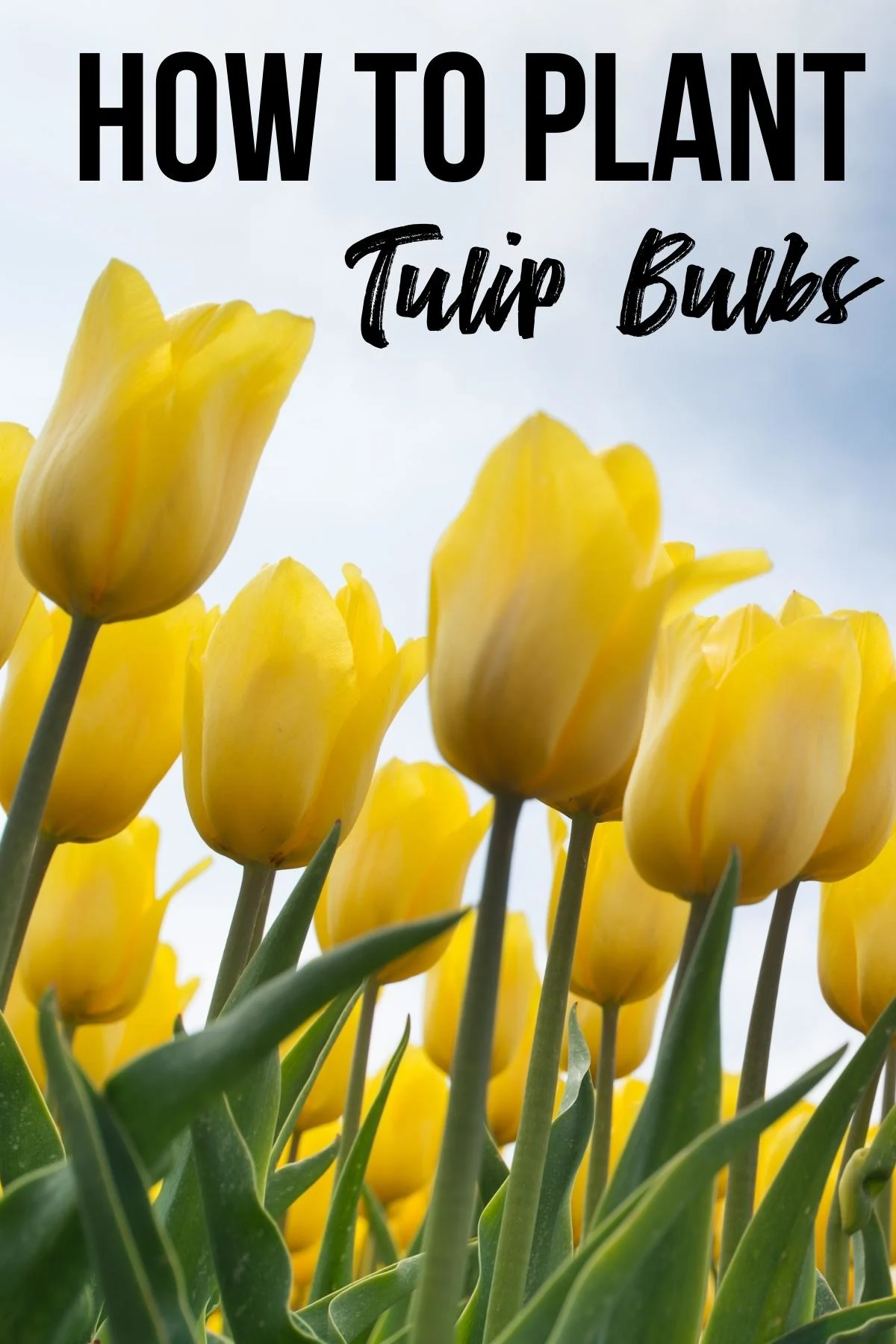
Tulips are my favorite flower. I held a huge bouquet of them at our spring wedding, and we take a trip to Skagit Valley in Washington State to see the massive tulip fields in bloom every year. It's totally worth trudging through the mud to experience this beautiful sight!
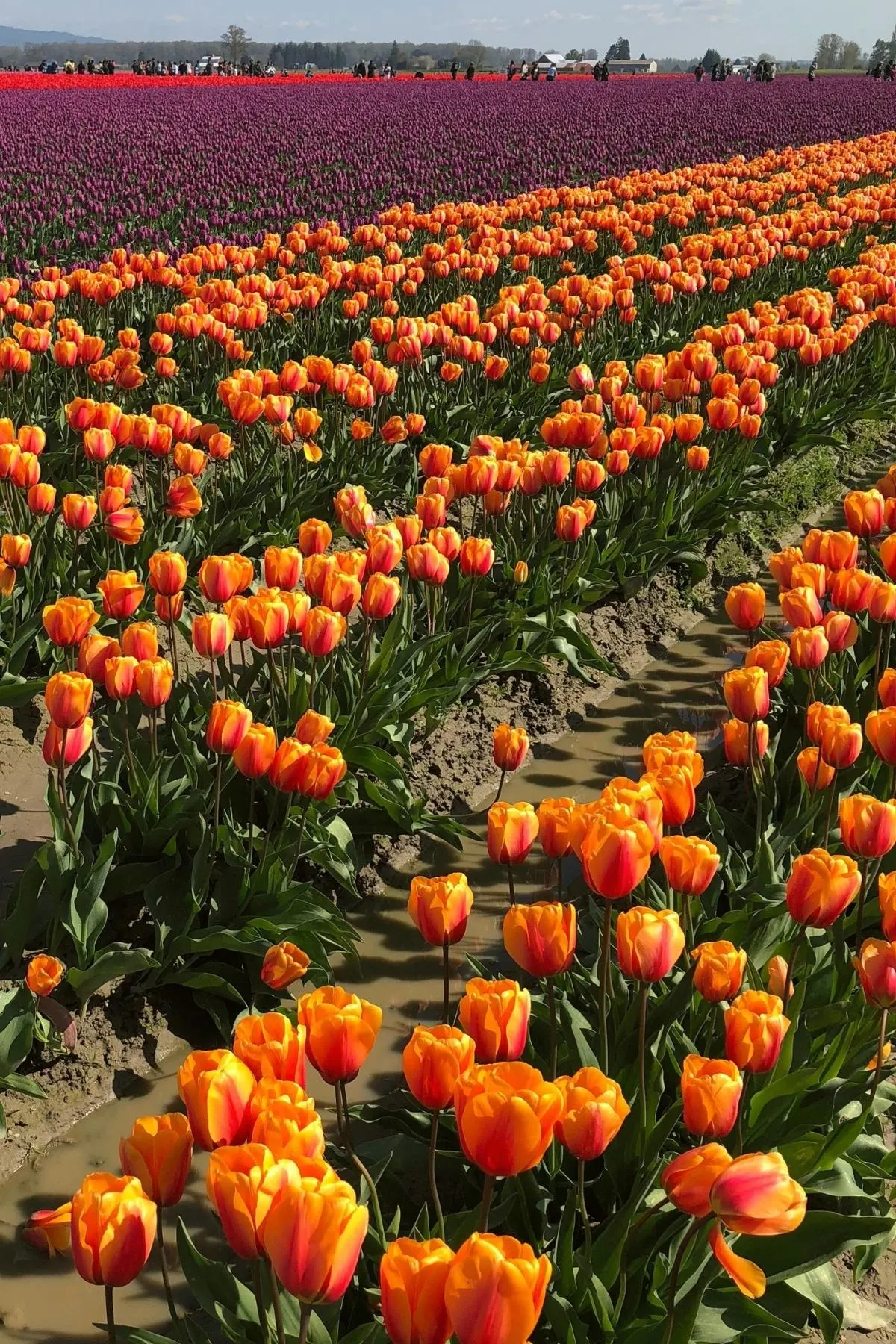
There are approximately 75 species and countless varieties with different colors and textures. Some types don't even look like tulips, with fringes or double layers of petals that give the flower a softer look.

Luckily, it's easy to grow tulips yourself, as long as you plant them in a suitable spot in the garden. There's nothing more gratifying than seeing a colorful row of tulips pop out of the ground after a long winter!
This post contains affiliate links for your convenience. Purchases made through these links may earn me a small commission at no additional cost to you.
Where to Get Tulip Bulbs
It's not hard to find tulip bulbs in garden stores, online, and through mail-order catalogs. I usually order mine direct from the Skagit Valley fields we visit in the spring, or in larger quantities from a wholesaler like Colorblends.

If you buy a container of growing tulips in spring, you can keep the bulbs for planting in the garden in the fall after the flowers and stems die back. To do this, cut off the dry foliage, remove the bulbs from the pot, clean off the dirt, and store them in a cool, dry place in a paper bag until fall.
Where to Plant Tulip Bulbs
Tulip bulbs prefer fertile soil with a neutral pH, excellent drainage, and good sun exposure. Find a spot in the garden with at least six hours of direct sun to keep the stems straight and tall.

One important consideration when planting tulip bulbs is that the bulbs become dormant during the summer, and they do not like to get soggy during dormancy. For this reason, don't plant them with summer-blooming flowers that need regular watering in hot weather. Too much water in the summer causes the bulbs to rot.
When to Plant Tulip Bulbs
The best time for planting tulips is mid to late fall when midday temperatures are about 70°F and nights are in the 40s. In most locations, the months of October and early November are ideal times for planting tulip bulbs.
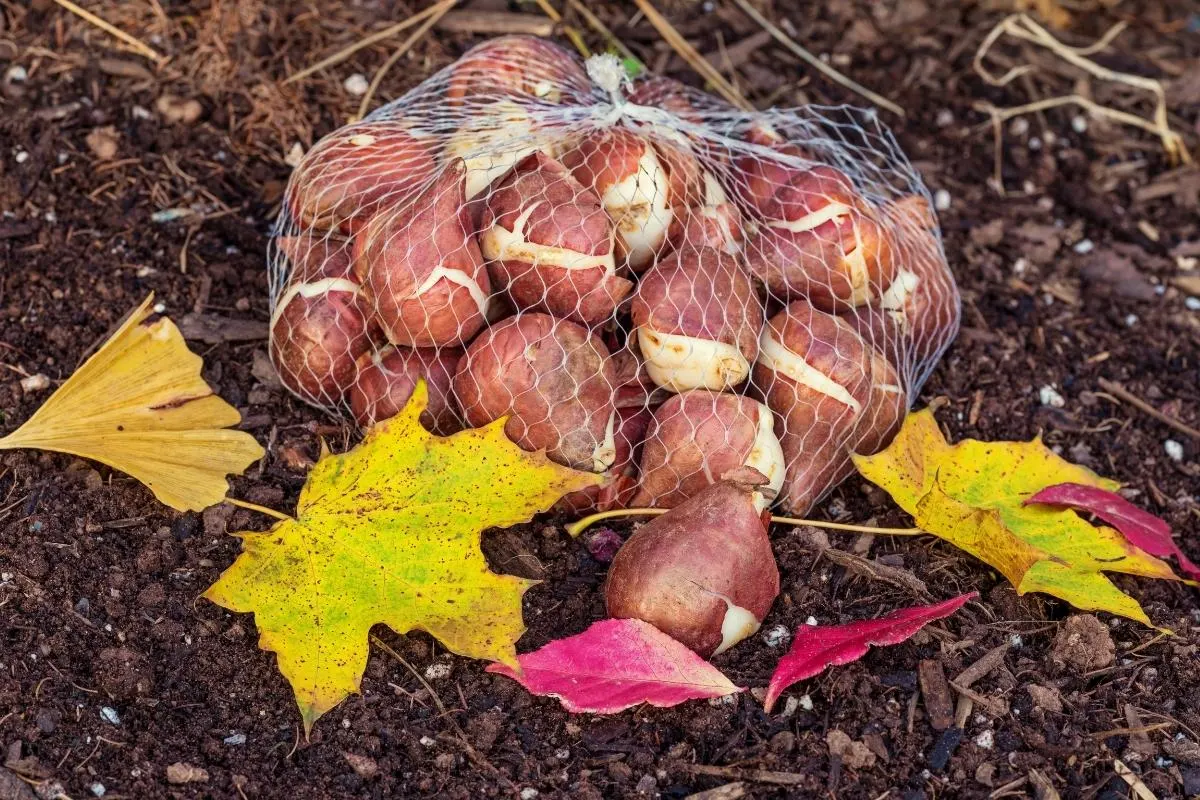
Planting tulip bulbs in the fall gives the plants time to grow an adequate root system before they burst forth with colorful flowers in the spring.
You can also simulate this chilling period by sticking your tulip bulbs in the fridge for several weeks. This allows you to force the bulbs indoors and enjoy the colorful blooms over the winter!
How Deep to Plant Tulip Bulbs
The best rule of thumb for how deep to plant tulip bulbs is to measure the bulb's diameter at its widest and then plant them three to four times as deep. In general, this means planting tulip bulbs between 6 to 8-inches deep, measuring from the bottom of the bulb.
Be sure to place them in the ground with the roundest part of the bulb downward because this is where the roots sprout. It's ok if the papery skin comes off the bulb as you plant it.
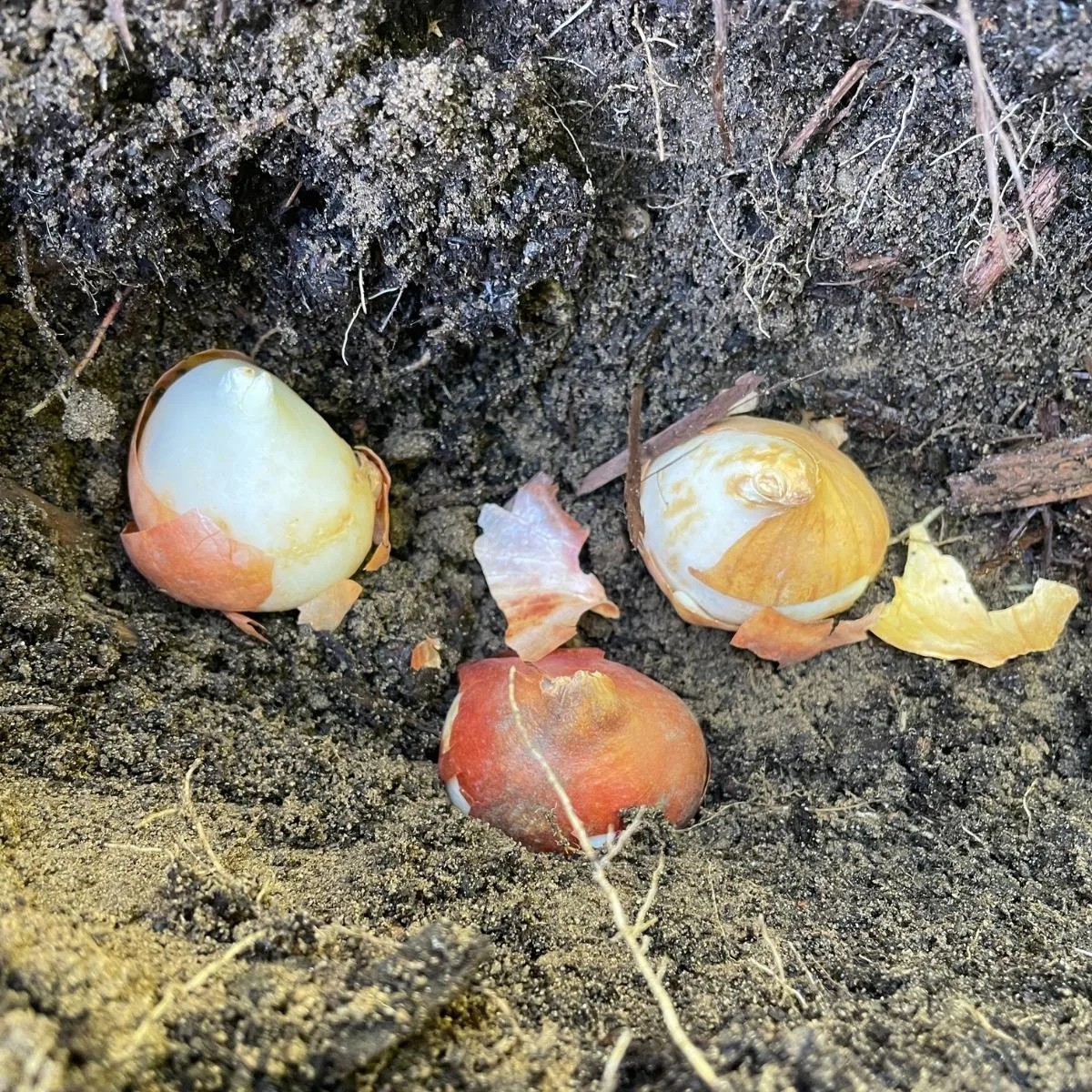
Planting tulip bulbs at the correct depth is especially important if you want to grow them as a perennial because a deeper planting hole protects the bulbs from fluctuations in temperature from one season to the next. It also makes it harder for critters like squirrels to dig them up and eat them!
However, if you want to grow tulips as an annual flower, they can grow and bloom planted in shallower holes and packed closer together.
How Far Apart to Plant Tulip Bulbs
Place tulip bulbs at least 6-inches apart in individual holes or a planting trench. When planted at a 6-inch spacing, you can create a spectacular block of color when the bulbs bloom.
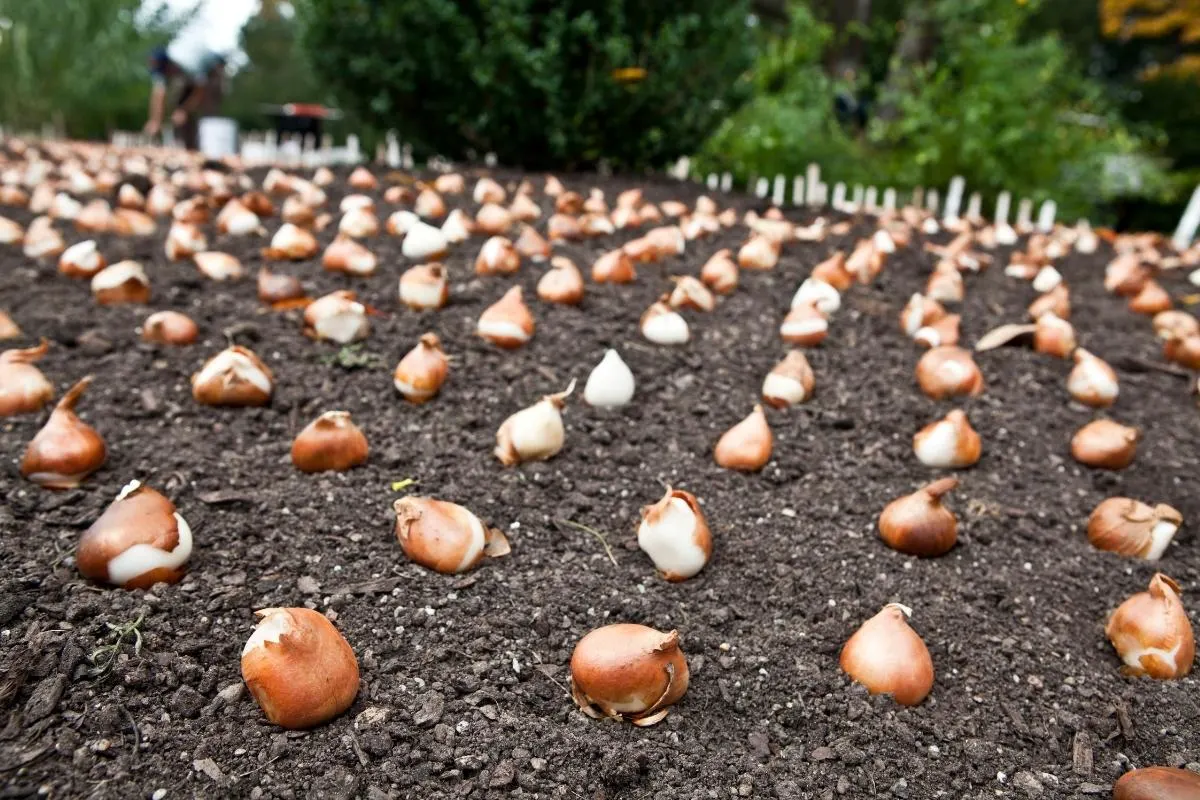
In containers, you can get away with planting the bulbs closer together. I like to really cram mine in to create a brilliant display in springtime, before digging them out and planting something new after they fade.
Caring for Tulips after Planting
During the first year, the bulbs contain enough nutrients and don't need much or any fertilizer beyond a small amount of compost in the planting hole.
However, if you want the bulbs to go on flowering year after year, applying fertilizer twice a year can increase their vigor. I like to sprinkle some Bulb-Tone around my tulip bulbs when they first emerge from the ground, and then again after they're done blooming.
Also, if you want the bulbs to sprout again next year, cut off the spent bloom as soon as the petals start to fall off. This will prevent the flower from putting all its energy into setting seed, so it will concentrate on bulb production instead.
You can learn more about what to do with tulips after blooming in this article!
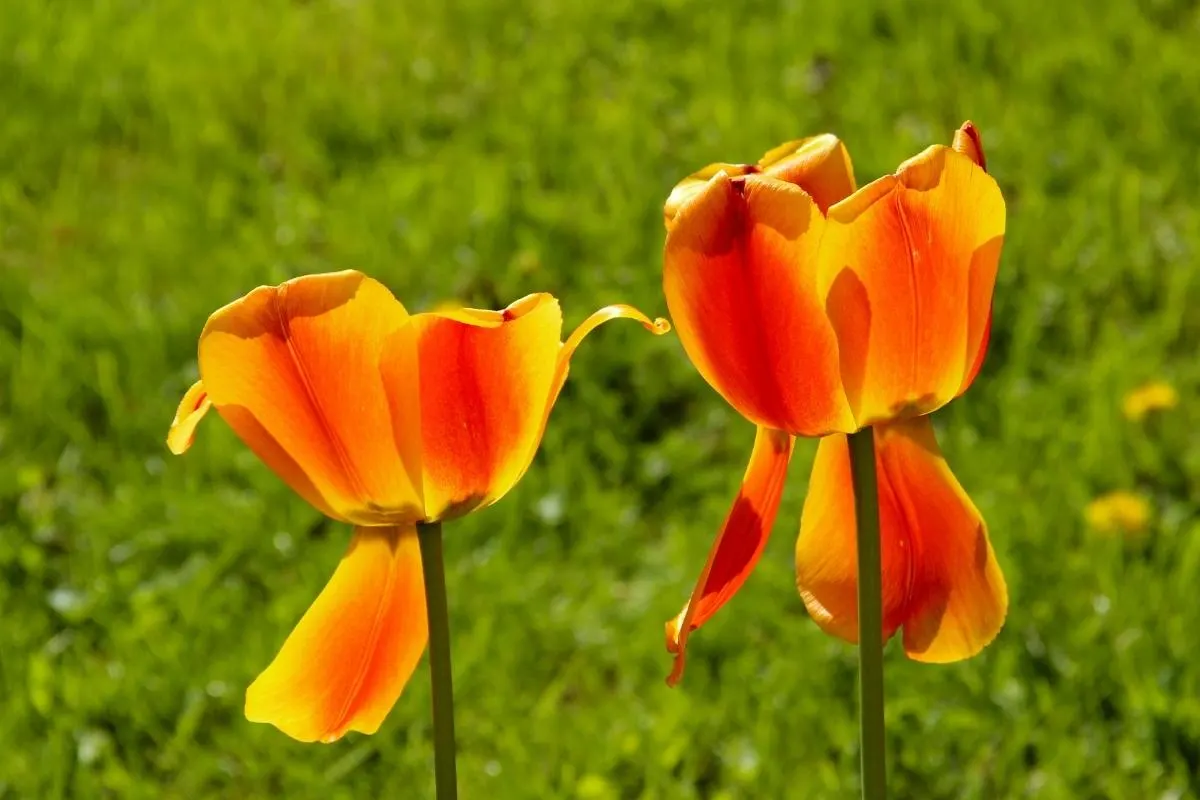
Frequently Asked Questions about Tulip Bulbs
Are tulip bulbs perennials?
In their natural environment, tulips are short-lived perennials. However, this species has been extensively hybridized over centuries of cultivation, and many varieties now grow best as annuals.
You can still grow tulips as perennials, but remember that tulip bulbs lose their vigor over time. Therefore, expect the biggest and best blooms in the first year, with smaller floral displays in the years after. The best way around this is to plant more tulip bulbs every year or two!
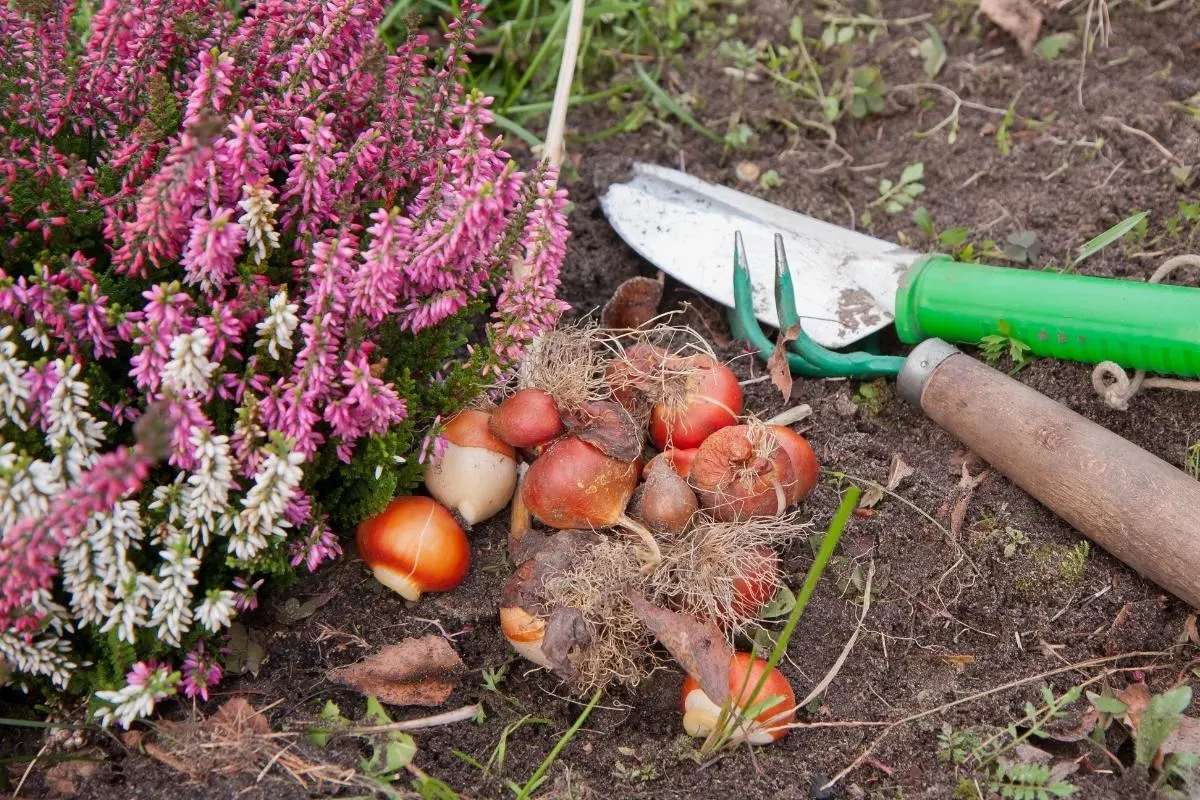
If you want to plant a perennial patch of tulip bulbs, Darwin hybrid and Fosteriana species tulips are among the varieties best suited to blooming for three years or more. You can also plant un-hybridized species of tulips which can naturalize and sprout back for many years.
In addition, for the best results growing tulips as perennials, plant them in a location with maximum sun exposure so the bulbs can replenish through photosynthesis each season.
Do tulip bulbs multiply?
Un-hybridized species tulips can quickly multiply and naturalize under the right conditions. This type of tulip has smaller flowers than hybrid varieties, but they readily multiply and produce small bulbs next to the mother bulb, which send up new shoots and blossoms the following spring.
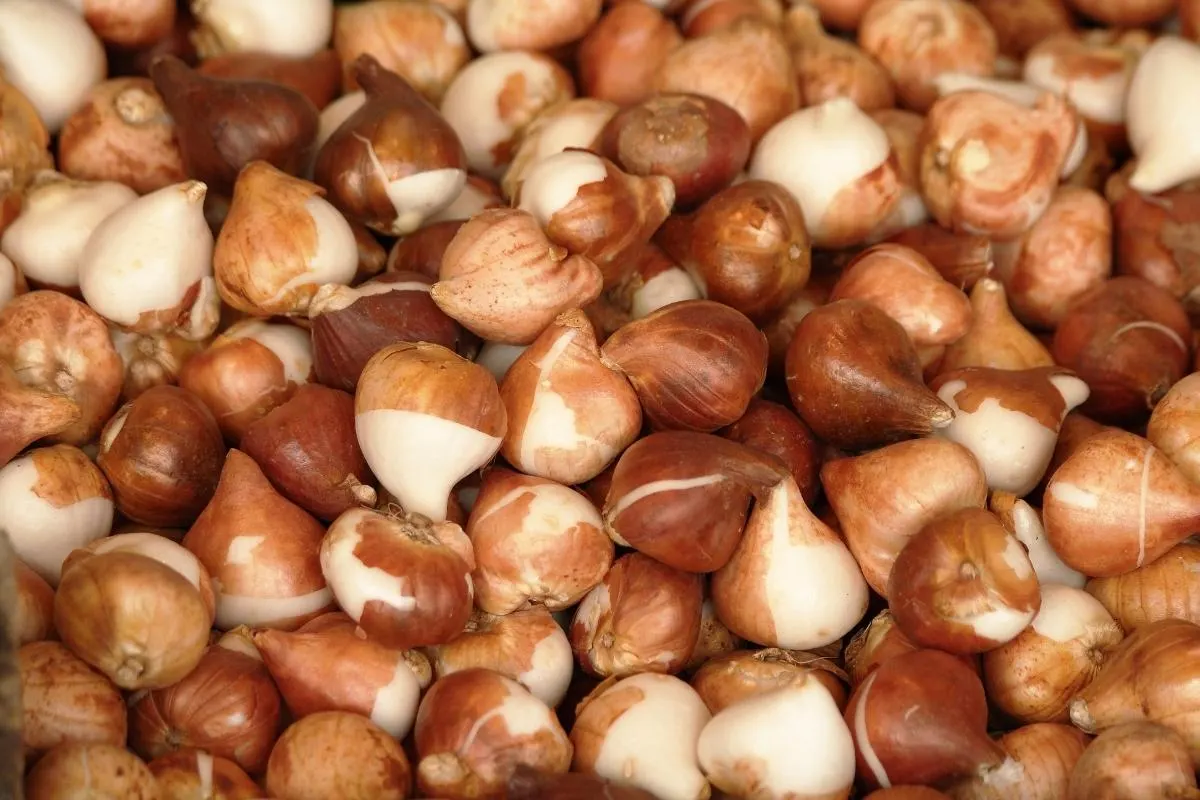
Can you plant tulip bulbs in spring?
Yes, as long as the bulbs are firm and intact, you can plant them in spring after the danger of frost is over and the ground is workable. However, spring-planted tulip bulbs will not likely flower until the following year.
Can you plant tulip bulbs in containers?
Yes! Tulips easily grow and flower in containers, and a pot full of tulips is a great way to add a splash of color to your deck, patio, or entryway.
